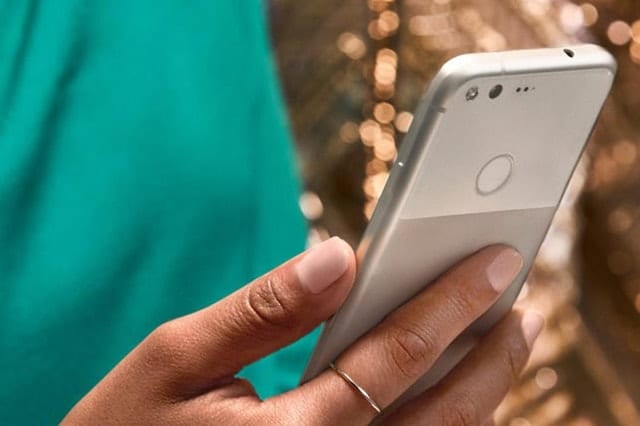For years, the Android OS didn’t have a “face”. Sure you could get an Android phone from manufacturers like LG, HTC, Huawei, Xiaomi, and Samsung but, OEMs (Original Equipment Manufacturers) typically load their devices with tons of pre-installed bloatware that simply kept users from enjoying the pure mobile experience Google envisioned for its Android platform. So they decided to do something about it, with the Google Pixel.
Launching its very own smartphone line, Google is finally taking charge of giving Android an identity similar to how Apple does with the iPhone. Without further ado, let’s get to know Google Pixel.
Pixel’s Look: An Uninspired Design That’s Hard to Dislike
If you were expecting Google to come up with a phone design as exciting as its vivid logo, you’ll be disappointed with the Google Pixel. We’re not saying it’s unattractive, though.
In a way, the Pixel shares the same appeal as the iPhone: a subtle design that doesn’t readily excite but isn’t easy to dislike either. We’ve gotten used to a simple design with smartphones, and Google doesn’t want to push the envelope too far.
When you pre-order one, you’ll be made to choose between these colors: Very Silver, Really Blue, and Quite Black. No, we’re not kidding you—those are really their names. Each one gives the phone a sleek look that you won’t want to cover up with a case.
How Much is a Pixel?
Its price is what you’d expect from a premium gadget. The smaller Pixel phone starts at $650 and the bigger Pixel XL will cost you around $770. If you’re an iPhone patron, you’ll immediately recognize that they’ve got identical price tags with those of the iPhone 7 and iPhone 7 Plus. Tech pundits say that Google did this on purpose.
Pixel’s Hardware: A Beast from Within
With the Pixel, you get a 1080p screen, and on the XL, even better with 1440 x 2160. Plus, they both have rear-facing fingerprint sensors that make it easy to unlock the phone, add new Google accounts, or even authenticate purchases. In addition, the phone comes with 4GB RAM and solid 32 or 128GB internal storage options. With that much RAM and memory available on the Pixel phones, you can expect nothing short of excellent multi-tasking capability, as well as a speedy overall response.
However, where Pixel phones set themselves apart from most Android smartphones is the fact that they’re essentially the first handsets to ever use the latest generation of quad-core Snapdragon 821 processors. While most flagship Android phones still use Snapdragon 820 chips (e.g. LG G5, Samsung Galaxy S7 Edge, etc.), the much-improved 821 processor is reportedly performing 10% better than the rest. Meaning, Google Pixel should be able to play 4K videos, play virtual reality (VR) games (in tandem with Google’s Daydream headset) and use multiple apps with no lags whatsoever.
Google Pixel’s Software: The Best on the Market
Google Pixel one-upped every major Android competitor right out of the box by running Android Nougat 7.1, an OS so new that no one knew about it up until a few days ago.
Besides running the latest Android version, Pixel phones also get another advantage from other Android-powered phones: they’ll be the first to receive Android updates when they roll out. The handsets will automatically run the updates in the background so you won’t be interrupted, unlike with Apple OS updates.
But the most important software upgrade you’ll find on Pixel handsets comes in the form of its built-in virtual help: Google Assistant. This artificially intelligent mobile companion replaces Google Now.
You can readily compare the Assistant with iPhone’s Siri but, it’s far more capable of answering elaborate questions and conduct more complicated tasks. This doesn’t come as a surprise to some since the Assistant is basically the powerful Google search engine personified.
With Google Assistant, you simply say the words “OK Google” even while you’re inside an app and it’ll be prompted to wait for your command or question. From there, you can ask it to bring up photos you’ve saved on a particular month or make travel itineraries or even operate your smart home. Honestly, we’re already geeking out at all the things the Assistant can do.
Other Noteworthy Pixel Features
Not a lot of devices today use USB-C ports for charging, but the Pixel will. While on the surface it’s strange, this actually is a great move by Google. To begin with, the bundled USB-C adapter that comes with Pixel phones will let users transfer messages, contacts, photos, and other content from their existing Android or iPhone device to Pixel with absolute ease. Keep in mind that this USB port type has been specially designed to allow faster charging, 4K monitor output, file transfers, and much more. No doubt, the Pixel phone being capable of charging up to 7 hours worth of battery life in just 15 minutes is a huge credit to the USB type-C technology.
Last but certainly not least, we have to mention the camera. Pixel‘s 12-megapixel camera surpasses iPhone’s. Wait, we take that back—Pixel’s camera surpasses everyone’s according to DxOMark’s tests. No wonder Google brags about Pixel having the best smartphone camera on the market. Not only that, Google now offers unlimited cloud storage in Google Photos, so your HD photos won’t slow down your phone.
P.S. We’re sure you’d be relieved to hear that Pixel comes with a headphone jack.
Where Can I Get a Google Pixel?
You can get an unlocked Pixel or Pixel XL straight from Google Store, which means that the handset can be used with all carriers (Verizon, Sprint, AT&T, T-Mobile, etc.) right out of the box.
Google is finally taking on Apple and Samsung in the battle for smartphone supremacy. If you’ve always been a fan of Android phones, we’re sure that you’d have little regrets getting your hands on the Pixel.


